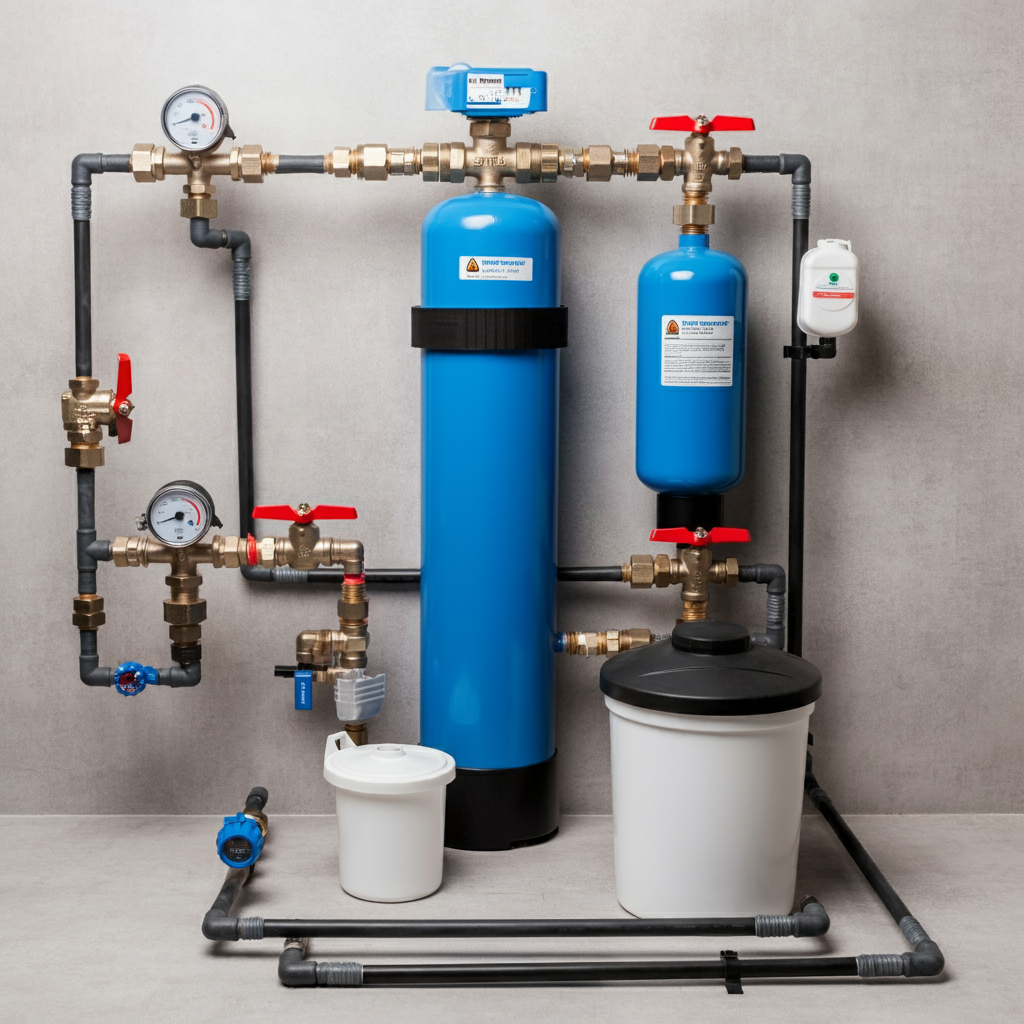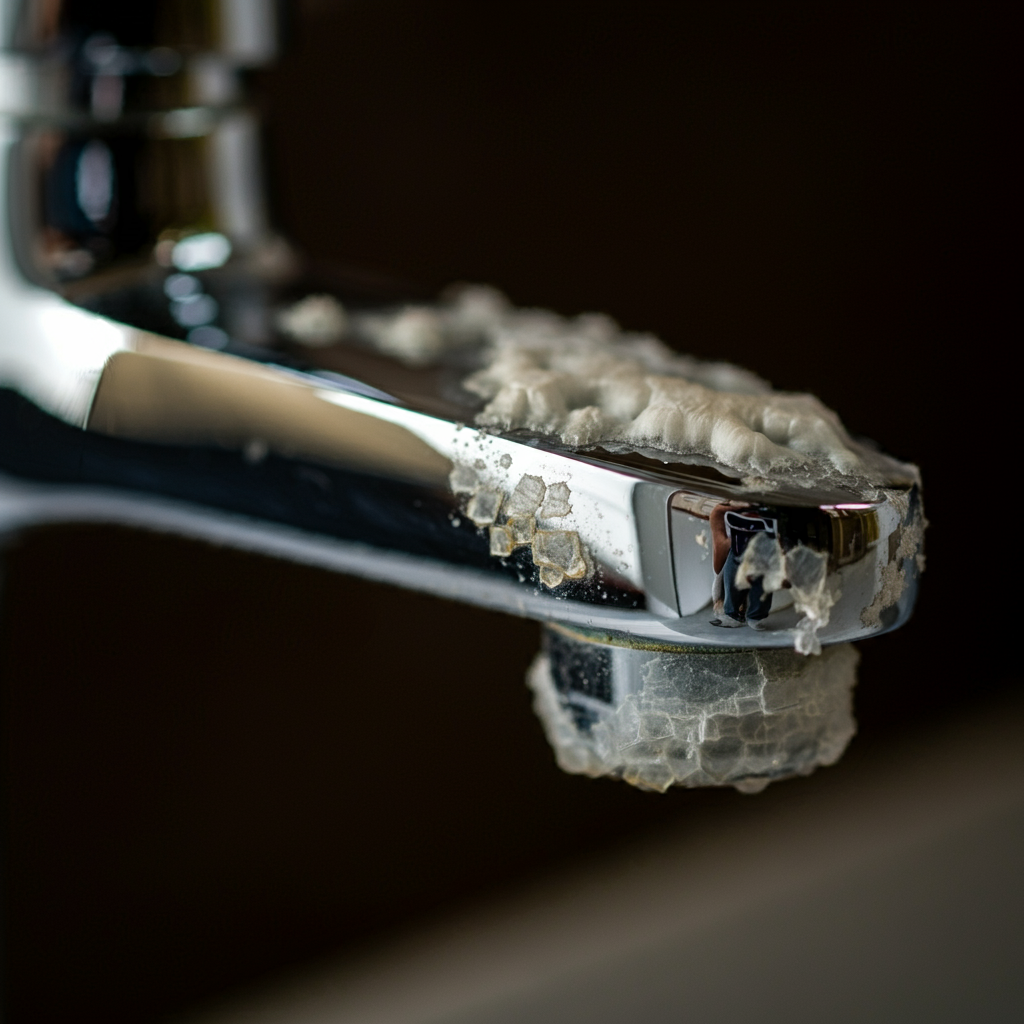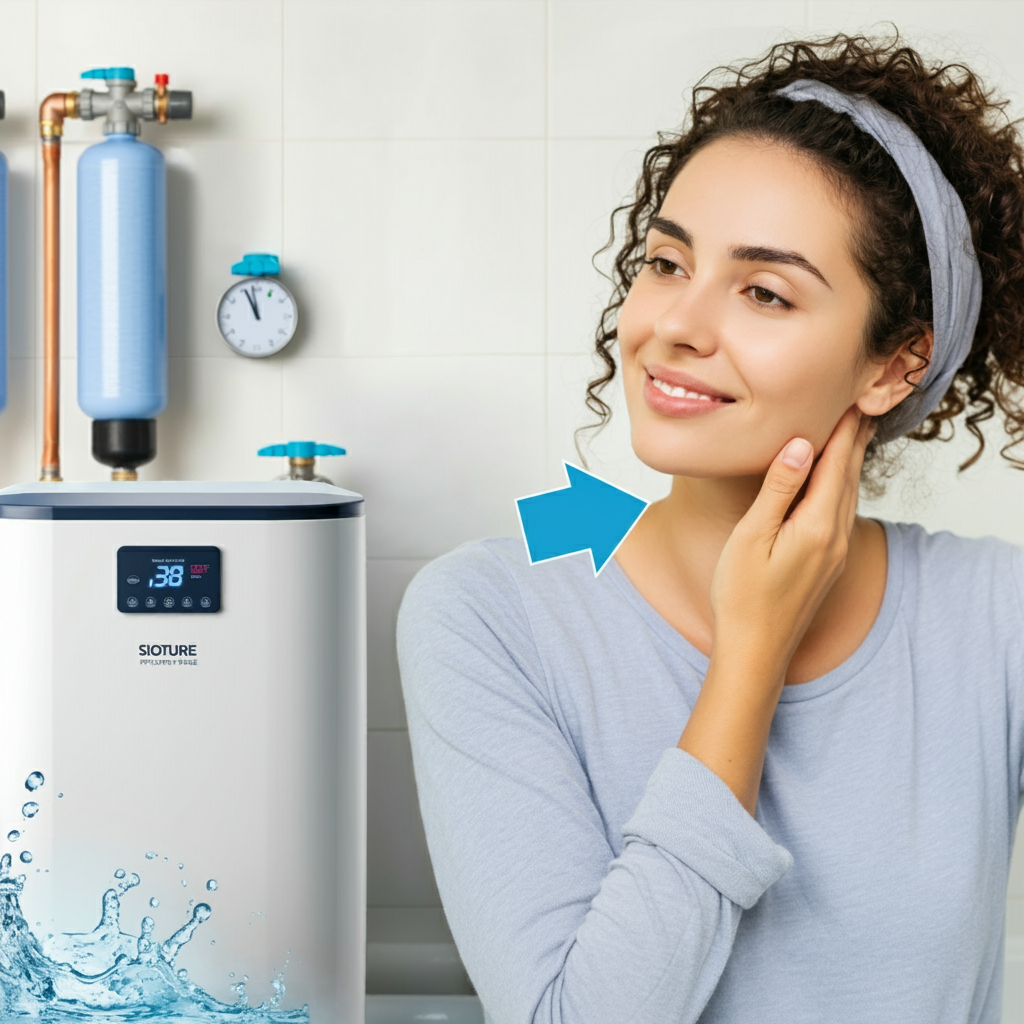The sizing of a water softener differs significantly for whole-house and point-of-use systems, primarily due to the volume of water they treat and their intended applications. Whole-house systems are designed to soften all the water entering your home, while point-of-use systems focus on a single fixture, such as a shower or kitchen sink. At WaterSoftenerSizing.com, we recognize that selecting the right size water softener is crucial for optimal performance and ensuring you get the most out of your investment. A softener that’s too small won’t effectively remove hardness minerals, leading to issues like soap scum, dry skin, and appliance damage. Conversely, an oversized softener will waste salt and water, increasing your operating costs. The key difference in sizing lies in the factors considered for each system. Whole-house water softener sizing primarily depends on your household’s daily water usage (measured in gallons per day), the hardness of your water (measured in grains per gallon – gpg), and the peak flow rate (gallons per minute) of your plumbing system. On the other hand, point-of-use water softener sizing focuses mainly on the flow rate of the specific fixture it serves and the water hardness. To ensure you select the right size for your needs, we recommend consulting with a water treatment professional or using our comprehensive water softener sizing calculator. By inputting your specific water hardness and usage data, our calculator can accurately determine the ideal softener size for your home. In the following sections, we’ll delve deeper into the intricacies of whole-house and point-of-use softener sizing, providing you with the knowledge and tools necessary to make an informed decision. Whether you’re battling hard water throughout your entire home or seeking a targeted solution for a specific fixture, understanding the nuances of water softener sizing will empower you to choose the system that best suits your needs and budget.
Understanding Water Softener Sizing
Water softeners are appliances designed to remove minerals that cause water hardness, primarily calcium and magnesium. These minerals can lead to a host of issues in your home, from dry skin and hair to clogged pipes and inefficient appliances. A water softener operates by replacing these hardness minerals with sodium ions through a process called ion exchange. The effectiveness of a water softener hinges on its size, which is determined by several key factors.
Key Factors in Water Softener Sizing
- Water Hardness (gpg): Measured in grains per gallon (gpg), water hardness indicates the concentration of calcium and magnesium in your water. Higher gpg levels necessitate a larger softener capacity. You can obtain your water hardness level by contacting your local water utility or using a home test kit.
- Daily Water Usage (gallons per day): This refers to the total amount of water your household consumes daily. Factors such as the number of people in your home, bathing habits, and appliance usage (dishwasher, washing machine) contribute to your daily water usage.
- Peak Flow Rate (gallons per minute): This represents the maximum amount of water that flows through your plumbing system at any given time. It’s essential to consider peak flow rate to ensure your softener can handle the demand during high-usage periods.
- Regeneration Cycle: Water softeners periodically regenerate to flush out the accumulated hardness minerals. The frequency of regeneration depends on the softener’s capacity and your water usage. Understanding this cycle is crucial for selecting a softener that can keep up with your needs.
- Household Size: The number of people in your household directly impacts your water usage and, consequently, the required softener size. Larger households generally require higher capacity softeners.
- Types of Appliances: Certain appliances, like dishwashers and washing machines, consume more water than others. If you have multiple water-using appliances, you may need a larger softener to accommodate their demand.
Whole-House Water Softener Sizing
Whole-house water softeners, as the name implies, are installed on the main water line entering your home. This means that all the water used throughout your house, from showers and faucets to appliances like washing machines and dishwashers, passes through the softener and is treated for hardness.
How Whole-House Softeners Work
Whole-house systems typically consist of two tanks: a mineral tank and a brine tank. The mineral tank contains resin beads that attract and trap calcium and magnesium ions, effectively removing them from the water. The brine tank holds a salt solution used to regenerate the resin beads when they become saturated with minerals. This regeneration process flushes the trapped minerals down the drain, restoring the softener’s capacity.
Sizing Calculations for Whole-House Systems
Properly sizing a whole-house water softener requires a two-step calculation:
- Grains to be Removed Daily: Multiply your water hardness (gpg) by your daily water usage (gallons). For example, if your water hardness is 10 gpg and your household uses 300 gallons per day, you need to remove 3,000 grains daily (10 gpg x 300 gallons/day = 3,000 grains/day).
- Days Between Regeneration: Divide the softener’s capacity (measured in grains) by the grains to be removed daily. For instance, if your softener has a 40,000-grain capacity, it would need to regenerate every 13.3 days (40,000 grains / 3,000 grains/day = 13.3 days).

Importance of Sizing a Whole-House Softener Correctly
Accurate sizing is essential for maximizing the efficiency and lifespan of your whole-house softener.
- Oversized Softeners: An oversized softener will regenerate less frequently but use more salt and water during each regeneration cycle, resulting in unnecessary waste.
- Undersized Softeners: Conversely, an undersized softener will regenerate too frequently, leading to higher salt and water consumption and potentially allowing hard water to bypass the system.
When to Choose a Whole-House System
A whole-house water softener is ideal for households with:
- Multiple Bathrooms: If you have multiple bathrooms, a whole-house system ensures that all showers and faucets deliver soft water.
- High Water Usage: Large families or households with high water-consuming appliances like dishwashers and washing machines benefit from the comprehensive softening provided by a whole-house system.
- Hard Water Affecting the Entire Home: If you’re experiencing hard water problems throughout your home, such as soap scum buildup, dry skin, and spotty dishes, a whole-house softener is the most effective solution.
If you’re unsure about the ideal size for your home, consult with a water treatment professional. They can assess your specific needs and recommend a suitable model that aligns with your budget and water usage.
Point-of-Use Water Softener Sizing
Point-of-use (POU) water softeners are compact systems designed to soften water at a specific location, such as a kitchen sink or showerhead. Unlike whole-house systems, POU softeners do not treat all the water entering your home, making them a more targeted and often more affordable solution for addressing specific hard water concerns.
How Point-of-Use Softeners Work
Similar to whole-house softeners, POU systems utilize ion exchange resin to remove calcium and magnesium ions from water. However, due to their smaller size and lower capacity, they are typically installed directly under the sink or showerhead they are intended to serve. This means that the softened water is only available at that particular fixture.
Sizing Considerations for Point-of-Use Systems
Sizing a point-of-use water softener is generally simpler than sizing a whole-house system. The primary factors to consider are:
- Flow Rate of the Fixture: The flow rate, measured in gallons per minute (gpm), determines how much water the softener needs to treat at any given time. Different fixtures have varying flow rates. For example, a showerhead may have a flow rate of 2.5 gpm, while a kitchen faucet may have a flow rate of 1.5 gpm.
- Hardness of the Water: Similar to whole-house softeners, the hardness of your water plays a role in determining the softener’s capacity. Higher hardness levels require a softener with greater capacity to effectively remove minerals.
Benefits and Limitations of Point-of-Use Softeners
- Benefits:
- Cost-Effective: POU softeners are generally more affordable than whole-house systems, making them a budget-friendly option for addressing specific hard water issues.
- Targeted Softening: They provide softened water exactly where you need it, such as at a showerhead for softer skin and hair or at a kitchen sink for spot-free dishes.
- Easy Installation: POU softeners are relatively easy to install and often don’t require professional plumbing assistance.
- Limitations:
- Limited Coverage: They only soften water at a single fixture, meaning other areas of your home may still experience hard water problems.
- Lower Capacity: POU softeners typically have lower capacities than whole-house systems, requiring more frequent regeneration.
When to Choose a Point-of-Use System
A point-of-use water softener may be the right choice if you:
- Have a Limited Budget: If you’re looking for an affordable solution to address specific hard water issues, a POU softener can be a cost-effective option.
- Have Specific Hard Water Issues: If you’re primarily concerned about the effects of hard water on your skin and hair, a POU softener installed on your showerhead can provide relief.
- Are Renting or Have Limited Space: POU softeners are compact and easy to install, making them suitable for renters or those with limited space for a whole-house system.
Expert Tips for Water Softener Sizing
While understanding the fundamental differences between whole-house and point-of-use systems is crucial, accurately sizing your water softener requires a more nuanced approach. Here are some expert tips to help you navigate the selection process:
- Consult a Water Treatment Professional: A knowledgeable professional, such as a plumber or water treatment specialist, can assess your specific needs, water quality, and plumbing system. They can conduct a thorough analysis of your water hardness, daily usage, and peak flow rate to determine the optimal softener size for your home.
- Use a Water Softener Sizing Calculator: Many reputable water softener manufacturers and retailers offer online sizing calculators. These tools allow you to input your water hardness, daily usage, and other relevant factors to receive a personalized size recommendation. At WaterSoftenerSizing.com, we provide a free, user-friendly calculator that can simplify this process for you.
- Consider Future Needs: If you anticipate changes in your household size or water usage, it’s wise to factor those into your sizing decision. Opting for a slightly larger softener can ensure it accommodates future needs without requiring premature replacement.
- Read Product Reviews and Specifications: Research different water softener brands and models, paying attention to user reviews and technical specifications. Look for models certified by reputable organizations like the Water Quality Association (WQA) or NSF International, which indicate that the product meets stringent quality and performance standards.
Recommended Water Softener Brands and Models
Choosing the right water softener brand and model can be a daunting task, given the plethora of options available on the market. At WaterSoftenerSizing.com, we’ve done the research for you, evaluating top brands and models based on performance, efficiency, customer reviews, and certifications from reputable organizations like the Water Quality Association (WQA).
- SoftPro:
SoftPro is a leading manufacturer of non-electric, twin-tank water softeners known for their efficiency and longevity. Their patented twin-tank design allows for continuous soft water, even during regeneration, and their systems are engineered to use less salt and water compared to traditional single-tank models. SoftPro softeners are backed by comprehensive warranties and have garnered numerous awards for their innovative technology.
- Recommended Model: SoftPro Elite Series: This series offers a range of sizes to accommodate different household needs and boasts features like demand-initiated regeneration, which adjusts regeneration cycles based on actual water usage, further optimizing efficiency.
- Culligan:
Culligan is a well-established brand with a wide range of water treatment solutions, including whole-house and point-of-use water softeners. They offer both salt-based and salt-free options, catering to diverse preferences and needs. Culligan softeners are known for their reliability and are often backed by professional installation and maintenance services.
- Recommended Model: Culligan HE Series: This high-efficiency series utilizes smart technology to monitor water usage and adjust regeneration accordingly, minimizing salt and water waste. The HE softeners are available in various sizes and can be customized to meet specific requirements.
- Fleck:
Fleck is a popular choice for those seeking a more budget-friendly option without compromising on performance. They offer a range of control valves known for their durability and ease of use. Fleck softeners are often sold as DIY kits, allowing homeowners to save on installation costs.
- Recommended Model: Fleck 5600SXT: This model features a digital control head with user-friendly programming options and a robust design built to withstand years of use. It’s available in various sizes and can be paired with different tank capacities to suit your household’s needs.
These are just a few examples of reputable water softener brands and models. The best choice for you will depend on your specific requirements, budget, and preferences. We encourage you to research different options, read customer reviews, and compare features to find the perfect fit for your home. Remember, choosing the right size is just as important as selecting a reputable brand. By combining a high-quality softener with accurate sizing, you can ensure that your home enjoys the benefits of soft, clean water for years to come. 
Making the Right Choice: Your Path to Softer Water
Determining the ideal water softener size for your home boils down to understanding your specific needs and water usage patterns. Whether you opt for a whole-house system that provides comprehensive softening or a point-of-use system that targets specific fixtures, accurate sizing is paramount for optimal performance and efficiency. At WaterSoftenerSizing.com, we believe that informed decisions lead to the best outcomes. By carefully considering factors like water hardness, daily usage, flow rate, and household size, you can confidently select a water softener that meets your needs and budget. Remember, consulting with a water treatment professional or utilizing our sizing calculator can provide valuable insights and ensure you make the right choice for your home. Key Takeaways:
- Whole-house softeners treat all the water entering your home and are ideal for larger households with high water usage or widespread hard water issues.
- Point-of-use softeners are cost-effective solutions for softening water at a single fixture and are suitable for renters, smaller households, or those with limited budgets.
- Accurate sizing is crucial for both whole-house and point-of-use systems to ensure optimal performance, minimize waste, and maximize the lifespan of the softener.
- Key sizing factors include water hardness, daily water usage, peak flow rate, and household size.
- Consulting a professional or using a sizing calculator can help you determine the right size softener for your specific needs.
Embark on your journey to softer, healthier water today. Visit WaterSoftenerSizing.com to utilize our free water softener sizing calculator, explore our recommended models, and connect with our team of experts for personalized assistance.

Craig “The Water Guy” Phillips is the founder of Quality Water Treatment (QWT) and creator of SoftPro Water Systems.
With over 30 years of experience, Craig has transformed the water treatment industry through his commitment to honest solutions, innovative technology, and customer education.
Known for rejecting high-pressure sales tactics in favor of a consultative approach, Craig leads a family-owned business that serves thousands of households nationwide.
Craig continues to drive innovation in water treatment while maintaining his mission of “transforming water for the betterment of humanity” through transparent pricing, comprehensive customer support, and genuine expertise.
When not developing new water treatment solutions, Craig creates educational content to help homeowners make informed decisions about their water quality.


